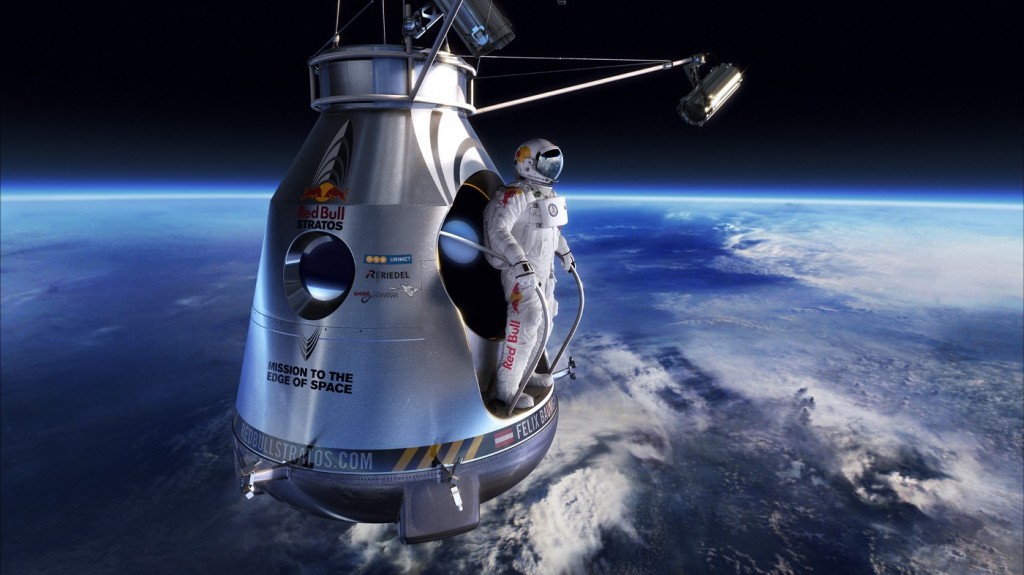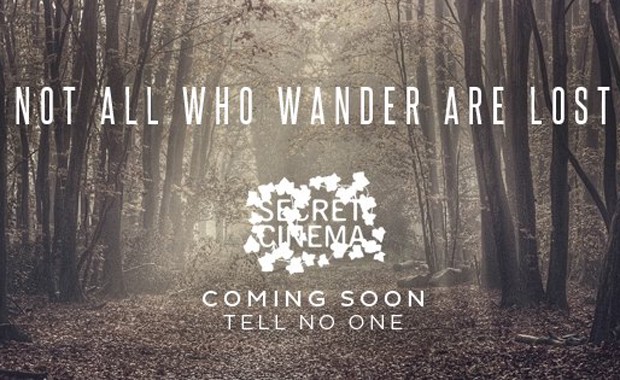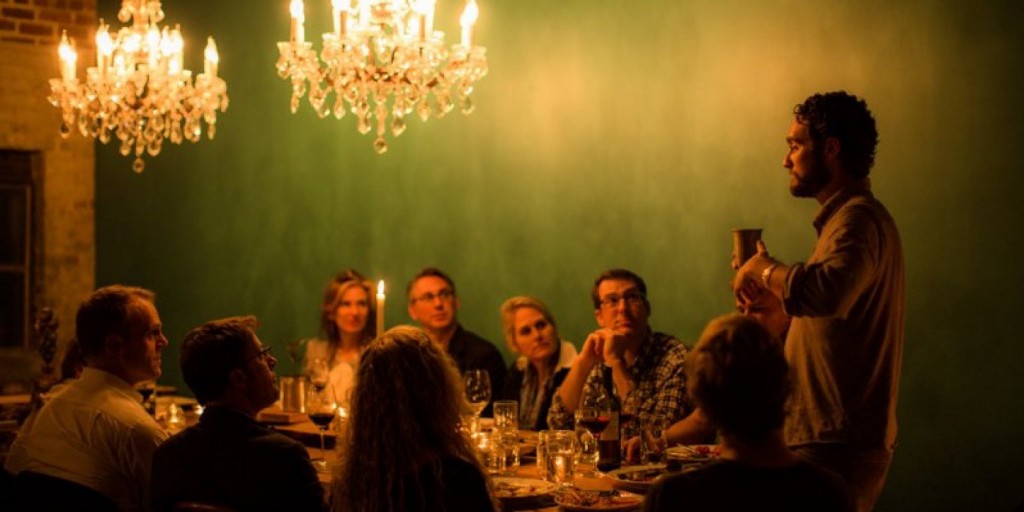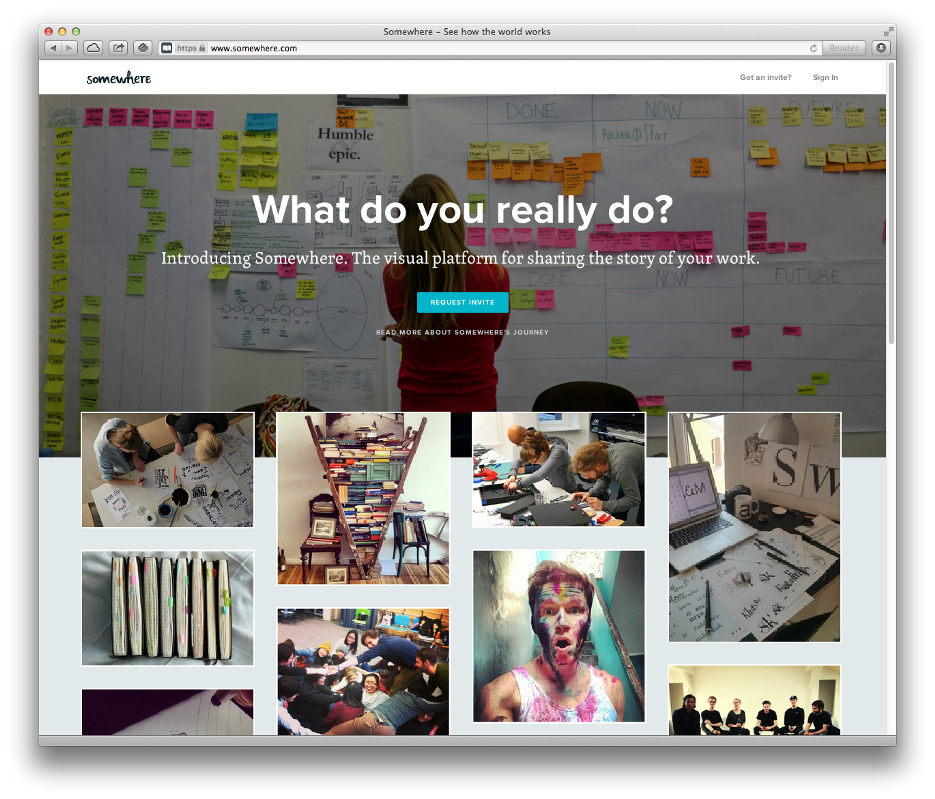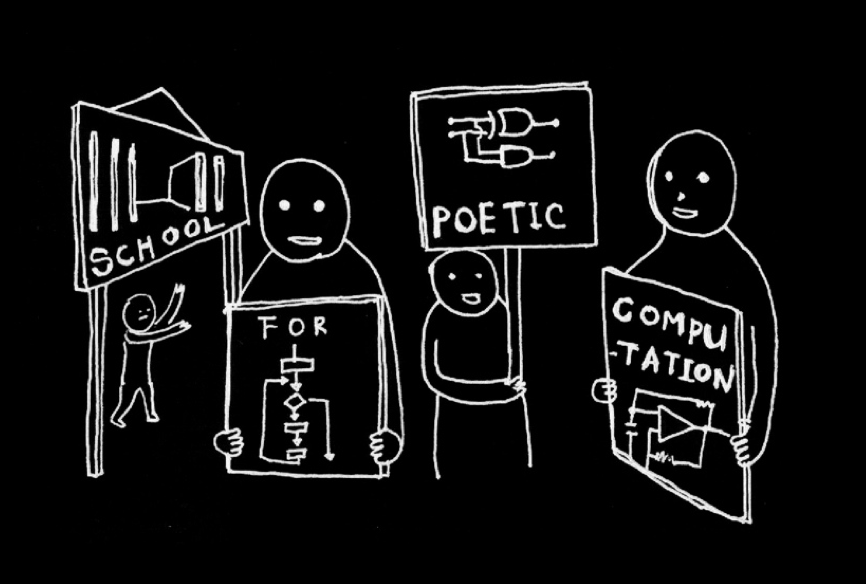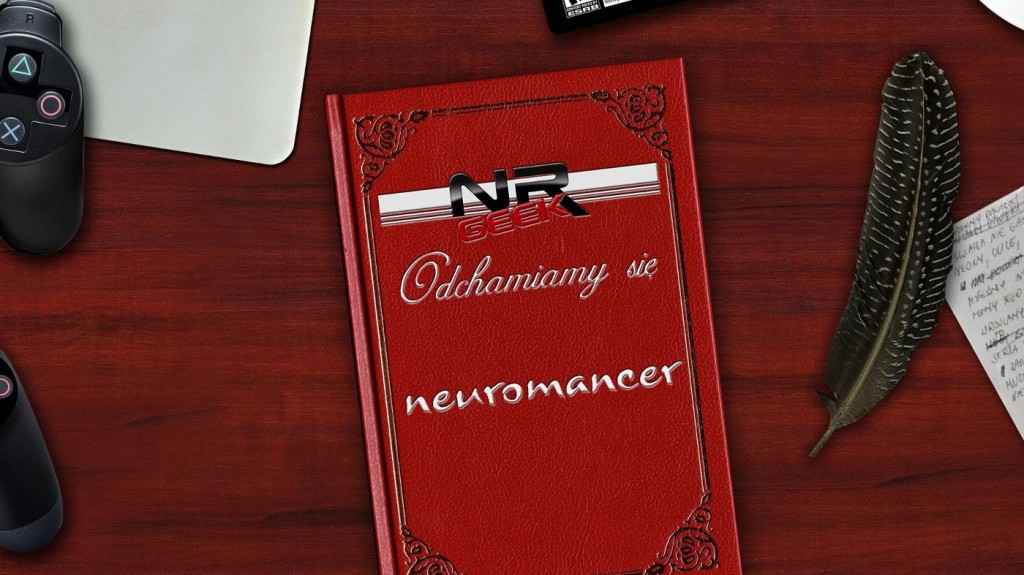The Beauty of Things That Don’t Scale
Tomorrow’s brands must be smart — and romantic

When you ask a marketer about the future of the business these days, you get very different answers. One person will tell you that marketing is a precise science that defies the concept of the “big idea” and relies on big data, while another will insist that marketing is defined by the quality of listening and storytelling, a creative discipline that must dream big to project and generate future value for its stakeholders.
In the marketing profession, the pendulum has, of course, always swung back and forth, from marketing as an art to marketing as a science, as an exercise in precision and responsiveness. But the tension between these two poles — between the left brain and the right brain, analytics and imagination, clarity and ambiguity — is perhaps more palpable today.
On the one hand, marketers are forecast to spend more money on technology in 2015 than IT departments. They have amassed an unprecedented amount of data and have more tools than ever to aggregate, analyze, and act on them. They are privy to customer conversations and have access to new ideas at unprecedented scale. On the other hand, the NSA revelations, the Sony cyber-attacks, and other privacy transgressions have made us, as consumers and citizens, acutely aware of the fragility of our identities. Some of us have begun to alter our online behaviors, up to the point where we prefer silence over expression, as our freedom of speech is suddenly threatened by unlikely foes: digital (self-)surveillance and an often vicious online mob that is quick to jump on the latest “shit storm.”
We over-share, we over-communicate, we overreach, but the conversation has run its course, being everywhere anytime has gotten tired, and transparency is no longer a virtue per se. As algorithms peek into every corner of our lives, and we face the constant onslaught of data as well as the pressure to cultivate our personal brands on social media, stillness and absence are offering a welcome retreat from permanent connectivity and hyper-activity. In light of this “tech-lash” and digital overwhelm, we are reminded of our thirst for meaning and are craving a sense of transcendence that points to something greater than just the next click. Increasingly, we are longing for longing, for a communion beyond community, for catharsis not consumption (not even a collaborative one), for authenticity instead of some data-based objective truth.
From constant connectivity to feelings that don’t last
Indeed, I believe the smart age of marketing is breeding a new romantic era. The smart, connected paradigm was one of instant gratification, real-time feedback, and adaptation. The goal was to accumulate maximum knowledge about customers and their preferences and behaviors, to quantify all touchpoints, in fact, to quantify everything, in order to then target and deliver with the utmost precision.
Succeeding the broadcast era, the smart age bore a social model of marketing that catered to newly empowered consumers and capitalized on user-generated content, making sure that customers, too, were provided with maximum knowledge. Fluid and super-flexible in its approach, smart marketing quickly adapted to ever-changing market circumstances. Everybody strove to be the Google of their category. Think of Zara, the fashion retailer, and how it created entire clothing lines on demand. Or the rapid-response Old Spice video ads that perhaps marked the pinnacle of the “your brand is a conversation” mantra that the Cluetrain Manifesto had so clairvoyantly predicted in 2000.
The marketing mix ideally had to change every day, every hour. From the reassuring consistency of their messages marketers moved to the vibrancy of conversations, from differentiation to ubiquity, from big moments to an array of small hyper-targeted, results-driven interactions. Smart marketing crowdsourced and democratized; it was inclusive, open, agile, and conversational. It became “newsroom marketing,” with community managers replacing campaign managers, and a growing cadre of journalists joining marketing teams as “content strategists” to drive and join social media-amplified stories.
Now, a few years into this brave new smart world, we’re slowly beginning to realize what we are losing in all that incessant chatter, with corporate conversationalists on either end. When everything that’s said is recorded and exploited, when everything’s explicit, rehashed, and hash-tagged, we lose a sense of aura, exclusivity, and elation. When everything is predictable and automated, we abandon the thrill of strangeness outside of our “filter bubbles,” of unfamiliar experiences that have the potential to disrupt our daily lives and grant them an awesome shock of meaning.
This new demand for meaning has dramatic effects on the economy of attention that constitutes the marketing arena. We like convenience and comfort, but we love brands that offer us unexpected beauty and friction. We look for rebels who interrupt our routines and offer us not just purpose and personalization, but a heavy dose of punch-drunk love. We want experiences that are unique and precious; experiences that can’t be scaled and must not be optimized either. In other words, we want romance, the ultimate insurgent in a regime of maximizers and optimizers.
It is worth noting that romance is not the same as authenticity. Authenticity, as the writer Meghan Daum stresses in her essay The Best Possible Experience, might be a form of romance, but the two are ultimately two different states-of-heart: one wants commitment, while the other wants beauty; one wants things that last, the other one does not; one wants a narrative that is true, whereas the other wants stories that feel true.
To demarcate the line between smart and romantic, the launch of the Apple Watch serves as an interesting case-in-point, and perhaps a seminal moment. Apple catapulted the wristband watch — a nostalgic product largely bereft of its functional value — into the category of fitness tracking and other quantified-self apps. It has made the watch a smart object, but it has deprived it of its subjectivity and flair. Ironically, Apple, the former epitome of a romantic brand, has this time failed to create a romantic product like the Mac or the iPhone. Those products worked even without caption. They were bold, iconic objects of desire, and their beauty was speechless. The Apple Watch, however, is a companion, not a love affair.
Amateurs and activists
Apple seems a little of out of step with the zeitgeist lately and as a result is losing cultural currency. Smart alone won’t suffice. Excellence without significance is meaningless. It is not surprising that in a recent study by strategic marketing firm Added Value, Tesla, the electric car maker, tops the list of brands ranked by their “cultural vibrancy.” A bold, forward-looking brand with a visionary CEO, it seems to occupy the space that used to be Apple’s terrain (Apple still ranks high but has ceded ground).
A notable newcomer on the list is Etsy, the online marketplace for local craftspeople that has smartly associated itself with the maker movement and prides itself with values-based trade in keeping with heightened social consciousness. Like other mission-driven brands such as Starbucks, Virgin, or Red Bull, it promotes a philosophy to market its product, or in fact, it promotes a philosophy through a product. All these brands share a romantic quest to imagine another, better world and are self-assured, if not fearless, about their respective contribution, whether it is creating a “third place” for community-building (Starbucks), an adventurous, hedonistic experience (Virgin), or a fast-paced life that constantly stretches us into new challenges (Red Bull). They are all activist brands that take a stance and take it to the street, with the boundaries between product and marketing disappearing.
In a certain sense, these brands act if they were amateurs. Like an amateur, they do things for the first time, making the familiar strange again. In the smart age, engaging amateurs (the brand’s “lovers,” which is the original Greek meaning of the word) helped companies like LEGO reinvigorate their brands. In the romantic age, with the space for proclamations diminishing under social web scrutiny, we’re increasingly seeing brands taking “amateur” action themselves, as activists rather than megaphones. Take Dove’s “Real Beauty Sketches,” which became the most-watched video ad of all time and inspired other brands including lingerie retailer Aerie (“The Real You Is Sexy”) and skin-care line Dermablend (“The Camo Confession”) to promote more authentic, non-photo-shopped concepts of beauty. Or take Red Bull, with its “Stratos Jump.” The motto used to be: Do good things and then talk about them. Now the motto is: Do really exciting things, and you don’t even have to talk about them anymore.
Brands must now not only live up to their values in their business demeanor, but also bring them to other experiences in the world. They must move from activation to activism, characterized not only by an idealistic concept of integrity, but also a romantic appreciation for uncertain outcomes.
Modern guilds and secret societies
Younger, less established start-up brands are even more radical in their activism. In this sector, too, however, purpose and social impact are augmented by a romantic concept of doing business, not just in the sense of the inherently romantic experience of being an entrepreneur, but in the quest to create more romantic capital for society overall. Striving to achieve a fundamental redefinition of what it means to be a company, these start-ups harken back to historic models of doing business and aim to transform them right at the heart of our consumerist capitalist society.
One of these young firms is Prime Produce, which has set out to build a guild for 21st century social entrepreneurs. Chris Chavez, one of the co-founders, told me he wants to create an exclusive community for the “un-like-minded,” not as connector for transactions, but as a “conduit” simply for the sake of creative exchange. He believes business and romance are inextricably linked: “the arts, creativity, and passion drive business, they’re at its core.” For him, business is the ultimate creative enterprise, not an antidote to beauty, delight, and love, but the very essence of it.
Inspired by the notion of “slow money,” Prime Produce’s mission is to redefine business as the maker of social and cultural capital. This goes to the core of what business is: “We want to reclaim the meaning of ‘company’ as in ‘to be in good company,” Chris said,” and to reclaim the term “profession” as “professing our commitment to a craft and the values that it implies: as an ethical position.” His organization is building a contemporary “guild hall” in Manhattan’s Hell Kitchen that will house artists, makers, and local entrepreneurs. Chris and his “partners-in-prime” are also planning a café and live-events open to the public.
Perhaps any modern networked organization is already a guild: a dynamic platform for a diverse group of professionals who share nothing but a core set of values. MIT professor Thomas Malone hinted at this by suggesting a guild structure for “e-lancers,” the digital micropreneurs who juggle various jobs at the same time. One could argue that today’s corporation is in fact merely a platform for intrapreneurs who add and derive value to and from it. If that’s the case, then marketing is less of a connector than a conscience, less of a value-generator than a custodian of values who knows that she is building character, not differentiation; integrity, not identity.
Like the original guilds, Prime Produce plays with the mystique and earnestness of a secret society. Members are carefully curated and cultivate the inherent ethos of their respective craft. Both the physical “hub” and the secrecy of the organization stand in stark opposition to the axioms of transparency, inclusiveness, and open-sourcing so prevalent in the digital era. Chavez also helps organize House of Genius, a forum for in-person, but anonymous exchange among entrepreneurs that trades in the currency of guessing games and doubt.
UK-based Secret Cinema operates in similar territory, showing interactive, participatory “mystery screenings” of seminal movies, from Casablanca toBlade Runner to The Grand Budapest Hotel. Movie titles and viewing locations are disclosed to viewers only on short notice. Fabien Riggall, Secret Cinema’s founder and CEO, says he wants to bring the romance back to the movie going experience and provoke strong emotional reactions. He is driven by the desire “to create a spectacle, a dream, another world we can play with, how the world might be.”
All these services have taken the practice of “unboxing,” known from tech products and fast becoming a critical ingredient for online retailers, and have made it the product. The unwrapping of gifts is more valuable than the gift itself. In a time when transparency is the norm, mystery attracts the utmost attention. Transparency dwindles against the thrill of the curtain-raiser — and the even greater thrill of the curtain staying closed. In the end, it doesn’t really matter which movie Secret Cinema is showing. In the smart age, the algorithm was a secret. In the romantic age, the secret is the value proposition.
Like Prime Produce, House of Genius, and Secret Cinema cherish the dark, Burning Man, Snapchat, Vine, Yo, Yik Yak, or Pop-Up Magazine (“just for one night”) celebrate ephemeral experiences.
All these formats create a new type of scarcity — romantic spaces that make us crave what we can’t see, can’t possess, and don’t know for certain. They restore doubt and friction in a world of total knowledge and seamlessness, and disarm us with moments of unexpected awe. They want to be wise and passionate instead of smart and know-it-all.
Brand consultancy Landor proclaims the new branding paradigm of “TMI” (too-much-information), but I think the opposite is true: we secretly appreciate the allure of not-enough-information. For the very moment we know too much is the end of romance.
Intimate and beautiful
It is only logical then that romantic marketing is driven by poets, not journalists. Poetry is both explicit and highly enigmatic. A poet tries to see the world for the first time, like an amateur of life would. A poem is “a house that tries to be haunted” (Emily Dickinson), and the very same can be said about brands in the romantic age. Congenially, Oxford business school professor Rafael Ramirez suggests we build “attractive organizations” that create beauty, proposing an “aesthetic view of management.” Such aesthetic considerations are deeply embedded in romantic brands: density trumps wide distribution; grace is becoming more important than instant gratification.
“Whatever is intimate is universal,” French actor Michel Piccoli once said. We’re witnessing the return to the idea of “not scaling,” to the value of intimate, authentic experiences that extract value from operating at modest scale and catering to a small but loyal audience. Consider, for example, dinner series that bring together diverse groups of people to toast a specific topic such as 15 Toasts (which I co-host with my friend Priya Parker and the World Economic Forum’s Values Council), the Death over Dinner series (no one dies, but all guests converse about the dignity of a good death), orKitchensurfing, an online platform that connects chefs and diners for private dinner gatherings. Or take the recent buzz about Ello, which positions itself as the anti-Facebook, as its pure, more intimate, and denser alternative that goes deep before it goes wide. Ello’s manifesto — with its warm, human tone — was a big part of its appeal and initial explosive growth. And Somewhere, a new professional online network, offers a romantic alternative to LinkedIn: instead of linear resumes and an accumulation of credentials, it treats our work identities as stories, allowing users to present about their unique talent and personality rather than proving that they fit (in).
Or take The Pigeonhole, an online community that hosts a book club of sorts for avid readers who collectively read and discuss books in weekly installments; the renaissance of in-depth, long-form lectures or debates (e.g.How-to Academy; Intelligence Squared); excessive formats such as the 24/7 interview marathons at the Serpentine Gallery in London; or secret, real-world social clubs like Spring Street Social Society in New York.
Romantic brands serve as idiosyncratic curators of the strange, eccentric and whimsical. Other examples include “concept shops” such as Broken Arm that are becoming popular in Paris, with cafes, curious items, clothing and a desire to make the shopper think.” Or Maria Popova’s Brainpickingsblog, a “human-driven machine for interestingness,” as she calls it, which serves as a tastemaker recommending select books and articles to her loyal readers. Both services resemble the good old hotel concierge and are, in essence, the anti-algorithm: collected by humans for humans. Accessible, personal, and highly subjective.
Our un-quantified selves
Romantic brands are wrapped in an air of nostalgia, a strong desire to connect back to a true sentiment, a profound truth that we may have lost in the busy comings and goings of our hyper-connected work lives: a yearning for something greater than our quantified selves.
However, romantic marketing doesn’t mean a backward model of marketing that is purely based on sentiments and intuition. It’s not an amour fou, as the French call it, the pipe dream of an unreasonable mind, devoid of strategy and calculus. It doesn’t want to simply return to archaic pre-data truisms. Rather, it will remain bipolar, yet more accentuated than before. The challenge and the opportunity ahead will be to create “smart romanticism”: using the data and intelligence at the marketer’s disposal to create romantic experiences rich with emotion and meaning that honor our un-quantified selves.
The sweet spot for both consumer and enterprise brands will be to reconcile smart technology with the imagination of a romantic. Why not combine Big Data and big ideas, big science and big dreams? Why not usher in what William Gibson’s cyperpunk 1984 novel Neuromancer projected as the marriage of cyberspace and romance, as, according to one reviewer, “a fusion of the romantic impulse with science and technology”?
Innovative marketers have always used both science and art, but the smart-romantic ones now do so not to demystify but to mystify, not to make everything explicit, but to create mystery and moments of inexplicable magic. They leave room for serendipity because they know that if it can be engineered, it’s not a brand. They don’t market just to move products; they do it to make meaning; not simply to generate impressions, but to impress themselves on the world.
Romantic marketers embrace ambiguity, the vagaries of our elusive characters. They follow the example of the School of Poetic Computation in New York which, true to its motto “less demo, more poetry,” devotes itself to the “strange, whimsical, and beautiful,” or the Office of Creative Research, a research firm that applies data to explore the relationship between science and soul. Or they develop tech products that un-filter the filter bubble and create zones of discomfort: the mobile app Somebody, for instance, allows users to verbally deliver text messages through strangers;20 Day Stranger lets two strangers share their lives — anonymously — over the course of twenty days; and the algorithmic discovery engine Forgotify is determined to make the four million songs on Spotify that have never been played heard.
We are indeed experiencing a third “disenchantment,” a term coined by the economist and sociologist Max Weber in 1919 who then bemoaned the iron cage of bureaucracy and Taylorism on the heels of industrialization. The first disenchantment occurred more than a century earlier when enlightenment and reason had expelled emotion, subjectivity, and spirituality from large parts of civilized society. Then and now opposition, however, emerged quickly: the original romantic movement in the late 18th century — inspired by British writers like Keats, Wordsworth, and Lord Byron — propagated a life toward the poetic and transcendent and insisted on the supremacy of emotion over reason. Two hundred years later, datafication seems to be pushing us to another trigger point for a new romantic counter-movement, this time heralded by the new poets, the new meaning-makers, of our time: marketers.
Like no other discipline in business, marketing has the power and responsibility to be the great enchanter, a modern medicine man, a magician rather than a data scientist or spreadsheet bureaucrat. As it did in the good old days of Mad Men, when big ideas were still a big idea, marketing can again provide us with the beautiful illusion that another life is possible. But this time the beautiful illusion is even more important because data and transparency are designed to constantly disillusion us: when maximum clarity and objective truth narrow our options, creating alternate realities is a truly humanizing act.
In the data-driven world of big, the time is ripe for the grand, albeit at intimate scale: heavy sentiments in small moments, niches that offer the great escape. As a powerful escape artist, marketing can lead the way. It can be the haven for misfits, pirates, renegades, rebels, poets, or mash-up artists, and cultivate mysterious sub-plots to the streamlined, algorithmic meaning-making machines. In this new digital-romantic age, it is — to borrow a term from William Gibson — the “ultimate hack.”
Tim Leberecht is the author of the book The Business Romantic: Give Everything, Quantify Nothing, And Create Something Greater Than Yourself (Harper Business, 2015) and the CMO of global design firm NBBJ.
A condensed version of this article first appeared in Marketing Booster.

